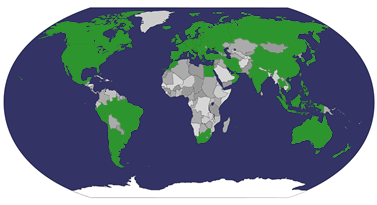
The São Francisco Church and Convent of Salvador, Pelourinho, Salvador, Bahia, Brazil (UNESCO WHS)
Salvador is a city on the northeast coast of Brazil and the capital of the Northeastern Brazilian state of Bahia. Salvador is also known as Brazil's capital of happiness due to its easygoing population and countless popular outdoor parties, including its street carnival. The first colonial capital of Brazil, the city is one of the oldest in the country and in the New World; for a long time, it was also known as Bahia, and appears under that name (or as Salvador da Bahia, Salvador of Bahia so as to differentiate it from other Brazilian cities of the same name) on many maps and books from before the mid-20th century. Salvador is the third most populous Brazilian city, after São Paulo and Rio de Janeiro, and it is the ninth most populous city in Latin America, after Mexico City, São Paulo, Buenos Aires, Lima, Bogotá, Rio de Janeiro, Santiago and Caracas.
The city of Salvador is notable in Brazil for its cuisine, music and architecture, and its metropolitan area is the wealthiest in the northeastern region of the country. Over 80% of the population of metropolitan region of Salvador has Black African ancestry. The African influence in many cultural aspects of the city makes it the center of Afro-Brazilian culture. The historical center of Salvador, frequently called the Pelourinho, is renowned for its Portuguese colonial architecture with historical monuments dating from the 17th through the 19th centuries and has been declared a World Heritage Site by UNESCO in 1985.
The São Francisco Church and Convent of Salvador is located in the historical centre of Salvador, in the State of Bahia, Brazil. The convent and its church are very important colonial monuments in Brazil.
The friars of the Franciscan Order arrived in Salvador in 1587 and soon built a convent and church, but these were destroyed during the Dutch invasions of Bahia in the early 17th century. The works on the current convent began in 1686 under Father Vicente das Chagas following a grandiose design that took decades to complete. The current church was built between 1708 and 1723, but the interior was decorated by several artists during a great part of the 18th century. Most decoration of the church and convent were finished by 1755.
萨尔瓦多(Salvador,全名São Salvador da Baía de Todos os Santos,意为“万圣湾边的圣萨尔瓦多”)是巴西西北的一座滨海城市,巴伊亚州的首府。萨尔瓦多很长时间里直接被称为巴伊亚,20世纪中前的许多书和地图中它就被标为巴伊亚(比如在丹尼尔·笛福著的《鲁宾逊漂流记》中)。今天当地许多人依然将巴伊亚作为萨尔瓦多的称呼,而巴西其他许多人则将该州称为巴伊亚。
萨尔瓦多位于大西洋畔的一个半岛上,离托多斯奥斯圣托斯湾很近。它是当地都市地区的中心。2002年其人口为254万人,是巴西的第三大城市。
萨尔瓦多市里教堂,主要是以哥德式及巴羅克式風格建築。想欣賞這些美侖美奐的大教堂,可以先到PracadaSe教堂廣場,欣賞建於十七世紀最大的大教堂。此外,位於廣場內,以大理石砌成的哥德式聖法蘭西斯教堂,建於一六零年,全教堂採用葡萄牙入口的古塊建成,內部雕刻精美。
References sources : wikipedia



























 Postcards received from
Postcards received from 








































































0 comments:
Post a Comment